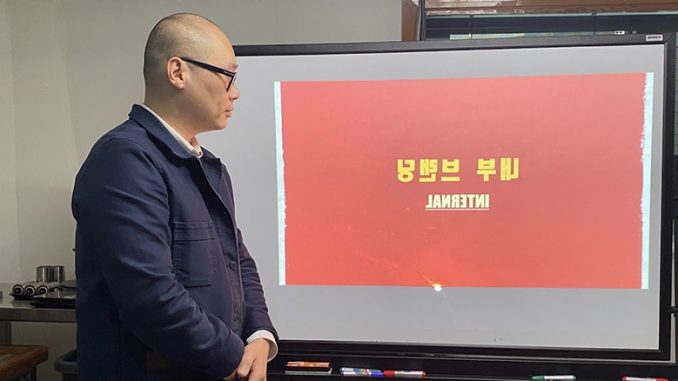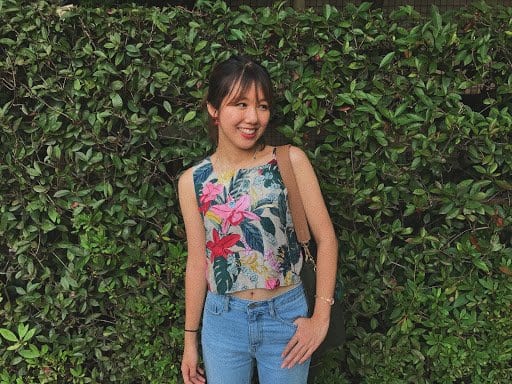
We wrap up our interview with Fritz Coffee Company’s BK Kim.
BY SUNGHEE TARK
SPECIAL TO BARISTA MAGAZINE ONLINE
Photos provided by Fritz Coffee Company unless otherwise noted
Editor’s note: Yesterday, we began our interview with BK Kim of Fritz Coffee Company in Seoul, South Korea, and concluded it with an explanation of Fritz’s branding strategy. To continue, BK expands on internal branding as a way of employees efficiently communicating the company’s messages.
Sunghee Tark: Your outlook on internal branding makes a lot of sense, and it also shows in your external branding. I notice that people are at the center of what and how you communicate with your customers. And because your internal team is strong, as a customer, I can attest to the fact that it creates a welcoming environment for customers.
BK Kim: I’m glad to hear. I think perhaps that’s the reason why we have a consistent outcome, whether that’s design work, coffee, or bread.
For me personally, the external branding comes after that. Whether it is graphic design or hospitality that we exhibit, it is an outcome of the internal work that we do. This is not to say that external branding is not important. It is important because it is a way for us to sustain the business—like the external branding does the job of attracting customers to our shops. After they come in, it is the work of the internal branding that speaks, but we need to first get customers to the door, and that’s the role of our external branding.
About Fritz’s external branding—what’s interesting for me is the seamless blend of Korean art and a non-Korean drink. In my opinion, compared to tea, coffee is not really a “traditionally Korean” drink. How did you decide to blend the Korean art and design with the coffee brand?
I once asked a friend of mine, James Hoffmann from Square Mile Coffee, what the national dish for the U.K. was, and he responded that it was curry—what I had always associated with India—because he was consuming it more than three times a week. For me as well, I’m eating pasta, notably non-Korean dishes, at least once a week, and I consume dishes from all over the world quite regularly. Coffee and bread are the same for me—for so many around me, we have coffee and bread at least once a day.
This is to say, I believe we are living in an era where so many things have evolved to be local. In the globalized context, something prepared by someone local gets labeled local; this is not to say that coffee originates in Korea, like curry does not originate in the UK. However, it is to say that coffee may not have originated from Korea but it has definitely become an integral part of the local culture. Acknowledging and celebrating the source where it came from is of utmost importance in the process. However, when you start seeing how the foreign product gets integrated into local culture, you are open to a lot more room for creativity.
Korea has been consuming coffee for a long period of time, and I believe that it is part of the local culture now. We are blending the two distinct elements, traditional art and architecture along with a traditionally non-Korean but now-local drink, coffee. The act of balancing the two can be hard at times, because I wouldn’t want to erase the source and origin from how it is presented. It is a curious journey.
Right. Now switching gears here again, how has COVID-19 affected your branding and design?
When speaking about branding and design, I like to include how we design the space, not only the graphic design element. And both in the way we communicate, and how we design the space for visitors to interact with our staff and product, have greatly changed since COVID.
In terms of the change in spatial design, currently we have narrowed our entrance so that with or without our staff present at the door, customers can walk by the automatic scanner for temperature, and scan their QR code for testing and tracing purposes. It is to also communicate with all the visitors that we are taking precautions seriously and that they can visit with more assurance and a sense of safety.
Secondly, we’ve also redesigned parts of our visual notice placed in different places in cafés. As you can see, there are reminders about wearing a mask at all times, except for a short moment when you are consuming a drink or bread, and maintaining the social distance between the seats.
A few campaigns with our design with the core message about safety are also in the planning. We are designing for products like hand sanitizers and other precautionary products for safety during the pandemic. I think design plays an important role in behavioral change—and if it works, we would happily use our design to convince people to stay safer. My hope is that our design provides a refreshing moment because I think everyone is exhausted by the constant messaging about safety protocol, the current status of COVID-19, and so on. If it is for a cute seal to provide comfort, we will design visuals to provide that.
Thank you for sharing. I am curious, what has had the biggest impact on your life—whether that is a book, object, or anything?
I would easily say it’s people. There have been so many people in coffee, and in Fritz that have had and continue to have immense impacts on me and my coffee career.
As we conclude, what do you hope for the future?
I have always shared that if we do our job well at Fritz, we shouldn’t worry too much about our own survival as a company. However, there may be a time where coffee isn’t even a viable product. With the threat of climate change … there is so much uncertainty about whether there will be coffee even in a few years—that’s what we are more worried about.
Collectively, we want to contribute to create a more sustainable future. At Fritz, we do have an eco-friendly team for this exact reason. With their leadership, we have switched most of the product that we use in our shops to eco-friendly options. However, we know that consuming coffee is at odds with the eco-friendly movement due to the high carbon footprint associated with coffee consumption. We are trying our best while being cognizant of the fact that so much more has to be done. Perhaps it is my little hope that Fritz continues to grow to have a true impact on how the coffee industry interacts with our environment.

ABOUT THE AUTHOR
Sunghee Tark is the co-founder of Bean Voyage, a feminist organization that collaborates with smallholder womxn coffee producers to build an equitable coffee value chain. She is also a freelance coffee writer, Specialty Coffee Association LEAD Scholar, and Re:co Fellow.

